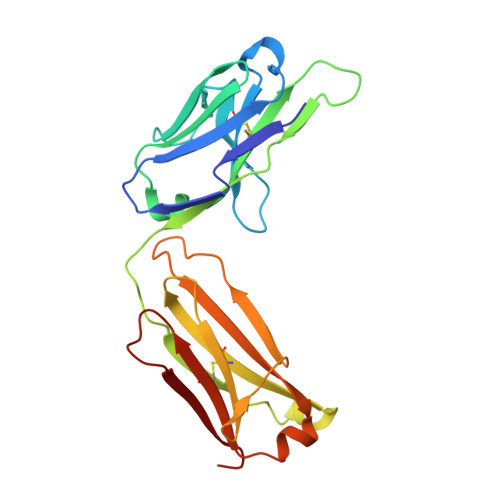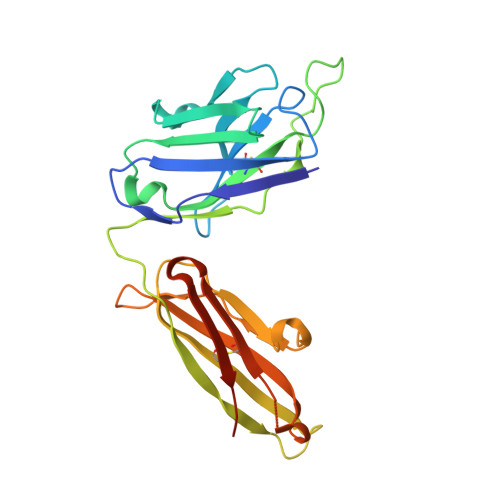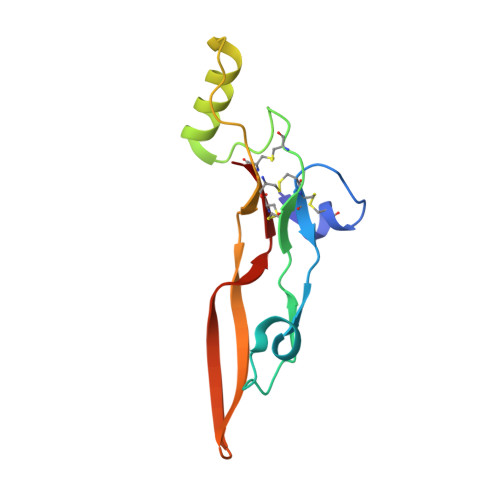TGF beta 2 and TGF beta 3 isoforms drive fibrotic disease pathogenesis.
Sun, T., Huang, Z., Liang, W.C., Yin, J., Lin, W.Y., Wu, J., Vernes, J.M., Lutman, J., Caplazi, P., Jeet, S., Wong, T., Wong, M., DePianto, D.J., Morshead, K.B., Sun, K.H., Modrusan, Z., Vander Heiden, J.A., Abbas, A.R., Zhang, H., Xu, M., N'Diaye, E.N., Roose-Girma, M., Wolters, P.J., Yadav, R., Sukumaran, S., Ghilardi, N., Corpuz, R., Emson, C., Meng, Y.G., Ramalingam, T.R., Lupardus, P., Brightbill, H.D., Seshasayee, D., Wu, Y., Arron, J.R.(2021) Sci Transl Med 13
- PubMed: 34349032
- DOI: https://doi.org/10.1126/scitranslmed.abe0407
- Primary Citation of Related Structures:
6XM2 - PubMed Abstract:
Transforming growth factor-β (TGFβ) is a key driver of fibrogenesis. Three TGFβ isoforms (TGFβ1, TGFβ2, and TGFβ3) in mammals have distinct functions in embryonic development; however, the postnatal pathological roles and activation mechanisms of TGFβ2 and TGFβ3 have not been well characterized. Here, we show that the latent forms of TGFβ2 and TGFβ3 can be activated by integrin-independent mechanisms and have lower activation thresholds compared to TGFβ1. Unlike TGFB1 , TGFB2 and TGFB3 expression is increased in human lung and liver fibrotic tissues compared to healthy control tissues. Thus, TGFβ2 and TGFβ3 may play a pathological role in fibrosis. Inducible conditional knockout mice and anti-TGFβ isoform-selective antibodies demonstrated that TGFβ2 and TGFβ3 are independently involved in mouse fibrosis models in vivo, and selective TGFβ2 and TGFβ3 inhibition does not lead to the increased inflammation observed with pan-TGFβ isoform inhibition. A cocrystal structure of a TGFβ2-anti-TGFβ2/3 antibody complex reveals an allosteric isoform-selective inhibitory mechanism. Therefore, inhibiting TGFβ2 and/or TGFβ3 while sparing TGFβ1 may alleviate fibrosis without toxicity concerns associated with pan-TGFβ blockade.
- Department of Immunology Discovery, Genentech Inc., 1 DNA Way, South San Francisco, CA 94080, USA. sun.tianhe@gene.com arron.joseph@gene.com.
Organizational Affiliation:


















